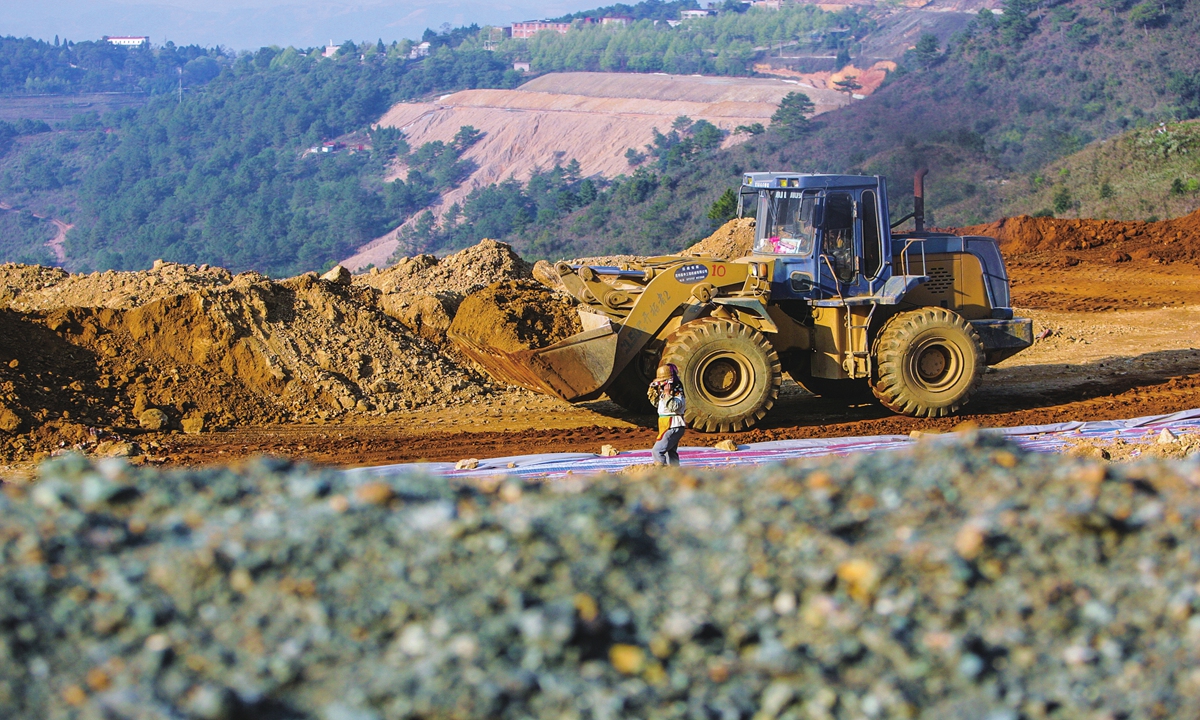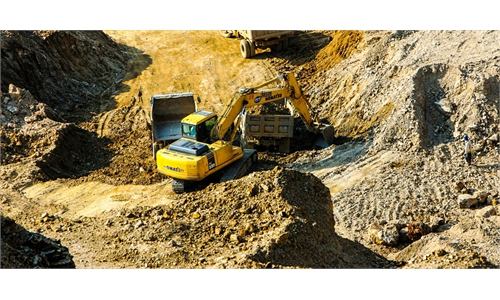Researchers develop green, efficient electric rare earth mining technology
Clean and economical approach to offer a future alternative

A rare-earth mine in Baoshan, Southwest China's Yunnan Province Photo:VCG
Mining rare earth has long been considered a dirty business, as it can lead to water and soil pollution, but a new technology developed by Chinese scientists may reverse the trend, offering a greener alternative for the industry.
Rare earth elements (REEs), especially heavy REEs, are an essential part of many high-tech devices, from the iPhone to the Tesla electric engine to LED lights. More than 90 percent of the global heavy REE demand is sourced from ion-adsorption deposits, which form within weathering crusts. However, conventional mining applies excessive usage of chemical agents to recover REEs from these deposits, not only exhibiting low efficiency but also polluting the environment.
Researchers from the Chinese Academy of Sciences' Guangzhou Institute of Geochemistry proposed a new approach in the journal Nature Sustainability earlier this month, showing that employing electrokinetic mining techniques to extract REEs from weathering crusts can be both clean and economical.
In this approach, researchers generated an electric field by putting electrodes on the top and bottom of a volume of soil. Electrokinetic effects can accelerate the migration of REEs, reducing the need for harmful chemical agents.
To evaluate the feasibility of the new method, they carried out several experiments of different scales. Results suggested that the new method outperformed traditional mining techniques. For instance, the scaled-up experiments achieved a recovery efficiency of 96 percent within 67 hours by using electrokinetics, while that using the conventional technique was only 62 percent at 130 hours. The difference between the impact of the old and the new approach was even more significant in an on-site field test: using electrokinetics can achieve a recovery efficiency higher than 90 percent, an 80 percent decrease in polluting agent usage and a 70 percent reduction in metallic impurities.
The study confirmed that this novel electrokinetic technology enabled green, efficient and selective recovery of REEs. Researchers also noted that the new method has great potential for use in the mining of other critical metals under conditions in which the metals exist in ionic states.
Rare earths are important strategic resources and key elements in the development of new technology and green applications.
China leads the world's rare-earth sector in terms of production and refining technologies. According to data from the General Administration of Customs, China exported 33,539 tons of rare-earth minerals in the first eight months of 2022, up 5.7 percent on a yearly basis.
Countries with large reserves of rare earths such as China have strengthened the protection of rare earth resources and the environment in recent years, and the mining and supply of rare earths are decreasing, experts said.
From the perspective of rare earth reserves, the global rare earth reserves were at 120 million tons in 2021. The top five countries in terms of reserves are China, Vietnam, Brazil, Russia and India, accounting for 95.8 percent of the total reserves.
In the first half of 2022, the profits of most rare earth permanent magnet enterprises maintained a high growth trend, a report from CITIC Securities said, adding that rare earth prices may rise steadily for the rest of the year.
China Northern Rare Earth Group announced earlier in October that its wholly-owned subsidiary Zibo Baosteel Lingzhi Rare Earth High-tech Co's rare-earth chloride smelting project with output of 25,000 tons per year in Zibo, East China's Shandong Province has completed construction and passed trial operations.
Xinhua-Global Times

